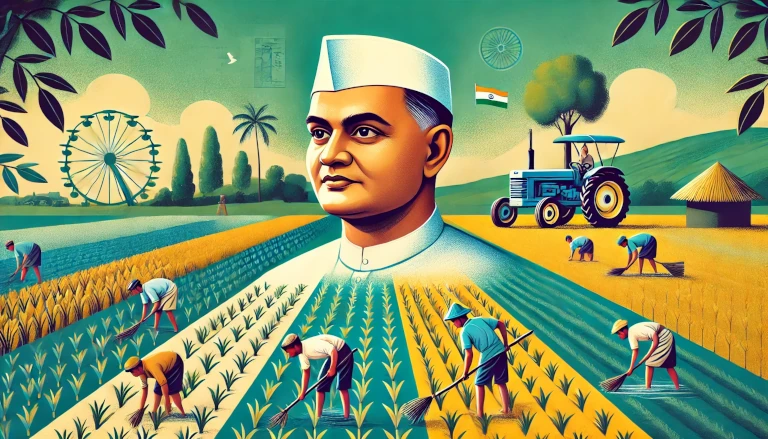The Minimum Support Price (MSP) is essentially a safety net set by the government to ensure that farmers receive a fair price for their crops, even if market prices fall. Here’s how it’s calculated, step-by-step, in the simplest terms:
Step 1: Understanding the Cost of Growing Crops 🌾
To start, the government looks at how much it costs a farmer to grow a crop. This cost includes everything the farmer needs to produce the crop, such as:
- Seeds: The cost of buying good-quality seeds.
- Fertilizers and Pesticides: Essential inputs to help crops grow better and protect them from pests.
- Labor Costs: Wages for workers who help with sowing, watering, harvesting, and other tasks.
- Water and Electricity: If the farmer uses water from wells or pumps, there’s a cost involved, especially for electricity or diesel to run the pumps.
- Rent of Land: If the farmer doesn’t own the land, they might pay rent to the landowner.
This total expense of growing the crop is called the Cost of Production. Calculating this cost carefully is crucial because MSP should ideally cover these basic expenses to prevent farmers from running at a loss.
Step 2: Different Types of Cost Calculations (A2, A2+FL, C2) 📊
The government uses a few different ways to calculate these costs, which they label as A2, A2+FL, and C2. Let’s break these down:
- A2: This is the actual cost of inputs like seeds, fertilizers, pesticides, and hired labor. It’s the simplest calculation, focusing on what the farmer spends out-of-pocket.
- A2 + FL: In addition to A2 costs, FL includes family labor. Many farmers’ family members help with the work, and even though they may not get paid directly, their time is valuable. So, this adds a value for family labor.
- C2: This is the most comprehensive cost measure. It includes everything in A2 and A2+FL but also adds costs for things like land rent and interest on the money invested. It’s a more complete calculation, capturing both direct costs and what it would cost if the farmer rented land or borrowed money.
Step 3: Adding a Margin for Profit 💸
The government doesn’t want farmers to just break even (cover costs); they want farmers to make some profit. To ensure this, a margin (or profit) is added on top of the cost.
For example:
- 1.5 Times the Cost: One of the recommendations has been to set MSP at 1.5 times the A2+FL cost. This means if it costs a farmer ₹1,000 to grow a crop (according to A2+FL), the MSP would be ₹1,500, allowing the farmer a 50% profit over their costs.
Step 4: Considering Market and Other Factors 📈
MSP isn’t based solely on production cost. The government also looks at several other factors, such as:
- Supply and Demand: If a crop is in high demand and short supply, MSP might be set higher to encourage more farmers to grow it.
- Market Trends: The government checks the prices of crops in local and international markets to ensure MSP remains fair.
- Consumer Impact: If MSP is set too high, it could raise prices for consumers, so this balance is considered.
- Environmental Factors: For crops that require a lot of water (like rice), the government might set MSP strategically to avoid over-cultivation in water-scarce areas.
Step 5: Government Approval and Announcement 📢
Once the Commission for Agricultural Costs and Prices (CACP) gathers all the data on costs, market trends, and other factors, it recommends the MSP for various crops. The government reviews these recommendations, and after finalizing them, announces the MSP before the crop planting season. This gives farmers a sense of security and helps them decide which crops to grow based on the assured price.
Example to Illustrate MSP Calculation in Simple Terms
Let’s say a farmer is growing wheat. Here’s how MSP might be calculated in simple terms:
- Cost of Production (A2+FL): ₹1,000 (for seeds, fertilizers, labor, water, and family work)
- Profit Margin: 1.5 times this cost to ensure profit, so ₹1,000 x 1.5 = ₹1,500.
Thus, the MSP for wheat would be set at ₹1,500 per quintal (or 100 kilograms), ensuring that the farmer makes a reasonable profit if they sell at this price.
In essence, MSP is the government’s way of saying, “No matter what happens in the market, you’ll get at least this much for your crop.” This helps farmers plan better and feel secure about their income.
Discover more from Green Ecosystem - Renewable Energy, Agriculture, and Environmental Sustainability
Subscribe to get the latest posts sent to your email.


